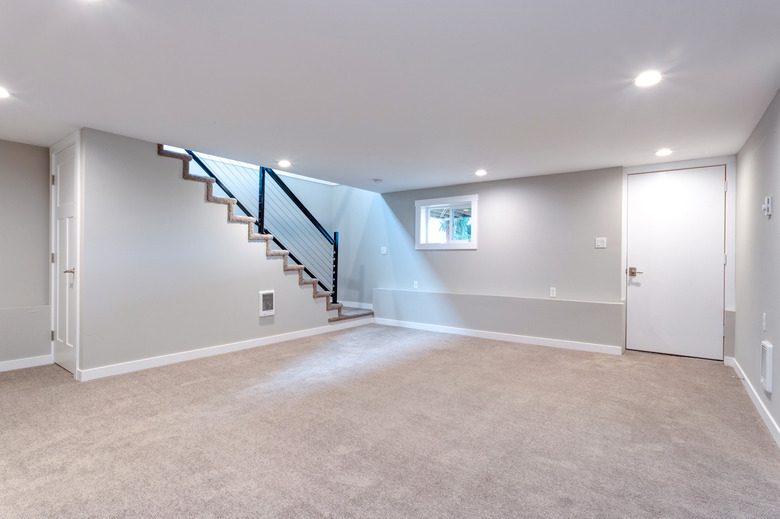How To Get Rid Of A Musty Basement Smell
We may receive a commission on purchases made from links.
Basements often have a reputation for being dark, dank, unpleasant places, and that can sometimes be true. If your basement smells musty, no amount of baking soda or air freshener will make it smell better for the long term. That's because there's usually a moisture or humidity issue that's creating the dank, musty smell that greets you every time you enter. Fixing the issue helps clear up the musty smell and makes your basement a more pleasant place.
Understand the Cause
Understand the Cause
Basements are notorious for having excess moisture, which often leads to a musty smell. Excess moisture can also cause mold and mildew growth, which adds to the odor. Search your basement for sources of moisture and signs of mold to know where to focus your attention. You'll need to deal with those issues first before you can banish the bad odors.
Look for Damage
Look for Damage
Your basement might have higher humidity in general, but it can also have damage that allows water to enter the space. For instance, cracks in your foundation or basement floor can be an issue since groundwater and rain can filter through them. Your basement windows can also leak and let in excess moisture.
Look for visible damage in your basement, especially in areas that always seem damp or that always smell. Hire professionals to repair major damage to the foundation or to repair other cracks and gaps that you don't feel comfortable repairing yourself. If you have a finished basement, you might need to replace damp and crumbing drywall or other damaged finishes. Once the damage is repaired, you can clean up the issues inside your basement.
Kill Mold and Mildew
Kill Mold and Mildew
If your basement smells musty, there's a good chance you have mold growth in the area. Some affected materials might need to be thrown away or replaced, but many hard surfaces can be cleaned to remove the mold and mildew. If you decide to clean the mold yourself, suit up with a respirator mask, goggles, gloves, and old clothes that cover as much skin as possible.
For the most natural approach, use undiluted distilled vinegar to tackle the mold. Spray it on the mold, wait an hour, and wipe or scrub at the spots. You can also use undiluted 3 percent hydrogen peroxide, letting it sit for a few minutes before scrubbing and wiping it away. Hydrogen peroxide can discolor some fabrics, so test a spot first.
You can also use bleach to kill mold, but it's a harsh chemical that need to be used with caution. Keep the space well ventilated and never use bleach with other cleaning products, especially vinegar, as it creates a toxic gas that can be dangerous. To use bleach to kill mold, dilute it by combining 1 cup of bleach with 1 gallon of water. You can spray or sponge it onto the mold to clean it away. Keep the bleach away from anything that it could discolor, such as carpet or fabrics.
Reduce Basement Moisture
Reduce Basement Moisture
Cutting down on basement humidity can reduce the risk of recurring mold and musty smells. Put a dehumidifier in your basement to keep the humidity level between 30 and 50 percent. When the relative humidity reaches 60 percent or higher, it creates ideal mold-growing conditions.
Improve the Smell
Improve the Smell
Making repairs and getting rid of the extra moisture should help address the smells, but it can take a while to eliminate the musty odor completely. Put out bowls of baking soda or use activated charcoal products to absorb the odors. Some products, like DampRid, are designed to tackle the smells in damp places.
You might also need to address the soft surfaces in the basement, which can soak up the dank smells and hold on to them. Shampooing your carpets and upholstered furniture can help remove the odors in them. Check curtains, throw blankets, and other soft items to see if they're machine-washable. If they are, run them through a wash cycle or two to freshen them.
